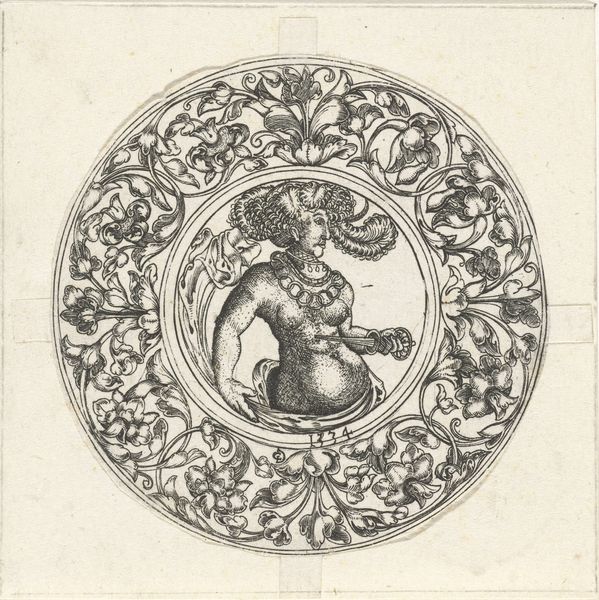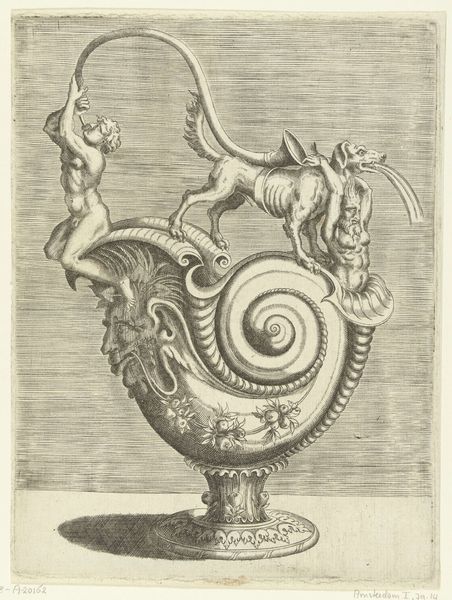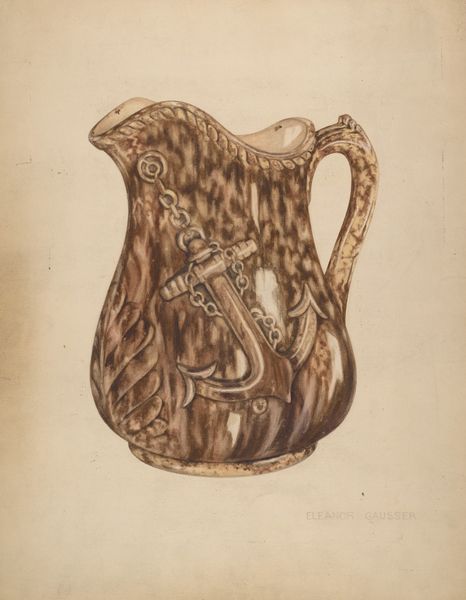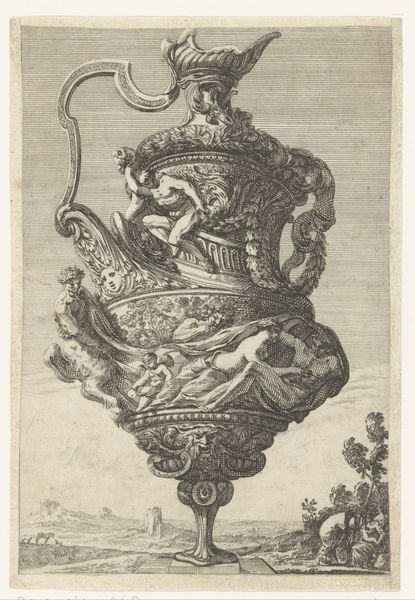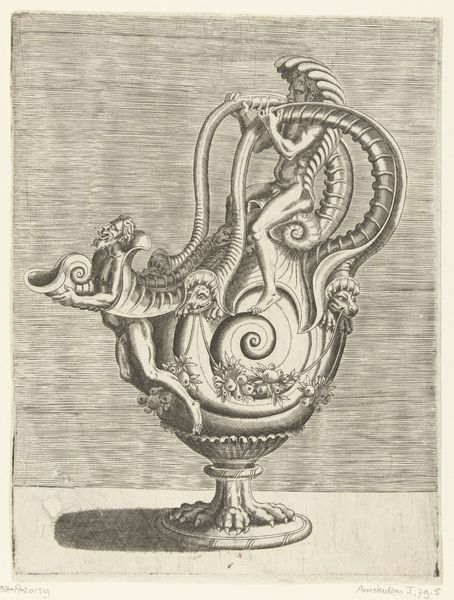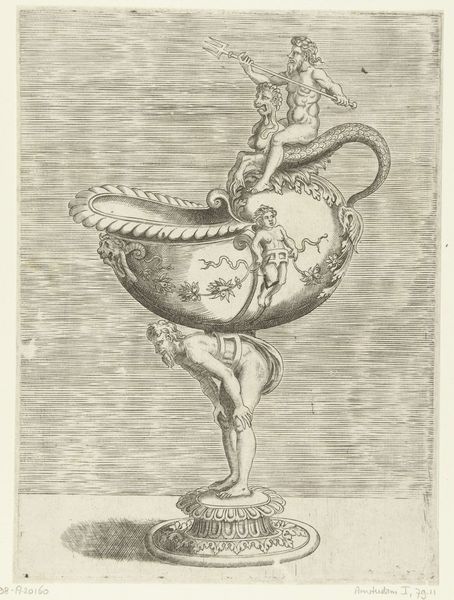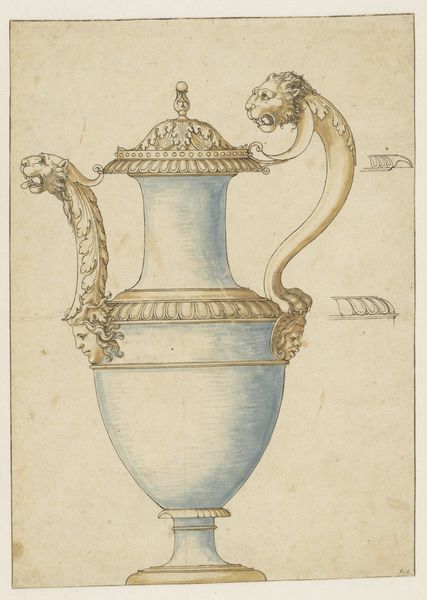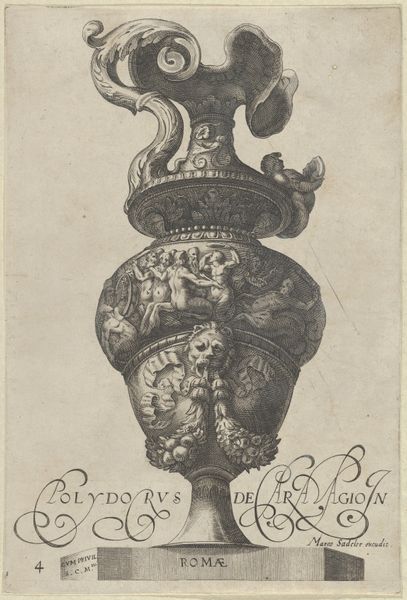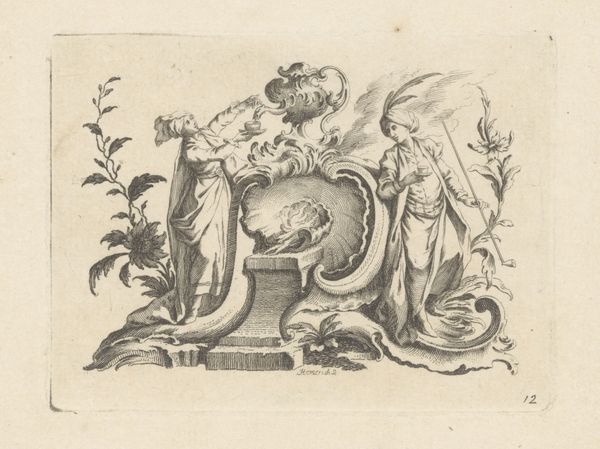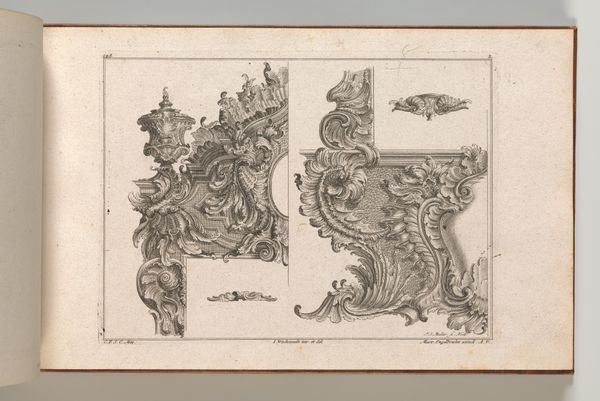
drawing, intaglio, engraving
#
drawing
#
allegory
#
fancy-picture
#
intaglio
#
figuration
#
11_renaissance
#
engraving
Dimensions: overall: 41.7 x 28.9 cm (16 7/16 x 11 3/8 in.)
Copyright: National Gallery of Art: CC0 1.0
Curator: Immediately, I'm struck by the sheer inventiveness and decorative excess on display here. What a fantastical form. Editor: This is "Fancy Pitcher," an engraving by Erasmus Hornick. While we don't have a precise date for it, Hornick was active during the Renaissance. It's fascinating to see how the medium of engraving allows for such intricate detail. Curator: Detail, yes, but let's talk about that line quality! The crisp, clean lines create a sense of volume and texture, particularly in the lion, and the fluidity and dynamism, the curve of that improbable handle... Editor: What’s also interesting is to consider the market for prints like this. They served as models for craftsmen—metalworkers, perhaps—offering them designs that could then be translated into three-dimensional objects for wealthy patrons. The print, in effect, facilitates a particular kind of labor and consumption. Curator: Absolutely. But stepping back, doesn’t the overall form evoke a certain baroque sensibility, even within its Renaissance context? The juxtaposition of naturalistic figures with these purely ornamental elements, for me, speaks to that tension. The whole is about contrasting elements, smooth and rough. Editor: It is a rather curious synthesis. Notice the positioning of the figures too. What sort of labor would it require to fabricate such a piece, or to melt one down for its precious metals? This gets me thinking about alchemical production! Curator: The question this work seems to raise for me, even without knowing the date for sure, is the place of humans versus beasts versus ornament and object. They’re so intricately entangled you can’t separate them in a clear hierarchy. That makes a formal analysis of the pitcher as an object less compelling than looking at the drawing in its social and intellectual contexts. Editor: Well, I can appreciate the design as it stands for its aesthetic beauty, but thinking about Hornick, his positionality in relation to craftsmanship and design…the whole thing feels like it demands that it be brought back to ground! Curator: It’s a complex object—conceptually, and practically if it ever existed beyond this rendering. Editor: Precisely, precisely. It leaves you with more questions than answers!
Comments
No comments
Be the first to comment and join the conversation on the ultimate creative platform.
